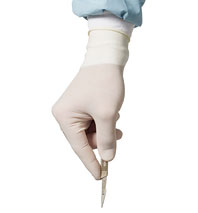
One of the curious aspects of the health-care crisis that accelerated in the past decade was the number of city specialists in reconstructive surgery, dermatology, and dentistry who simply stopped trying to treat illness. Alienated by the hassle and minimal compensation of insurance companies, they decided to do cosmetic work only. So you had dermatologists who never uttered the words “body check,” and ENT specialists who wouldn’t deal with people who couldn’t swallow. David Hidalgo, the former head of plastic surgery at Sloan-Kettering, who was once considered one of the best surgeons for breast reconstruction, even left the cancer institute to do aesthetic surgery full-time.
But now things have started to shift, as lifestyle medicine loses some of its allure—and paying customers. Liposuction was down 25 percent between 2007 and 2008; it’s a bellwether of ugly times ahead if certain doctors don’t adapt. “A lot of guys are suddenly opening their eyes and saying, ‘I haven’t done anything but cosmetics for years,’ ” says Fifth Avenue plastic surgeon John E. Sherman. “These guys are really panicking.” As a result, “plastic surgeons are trying to do hospital work—ulcers that aren’t healing, wounds, etc.,” says Minas Constantinides, board member of the American Academy of Facial Plastic and Reconstructive Surgery. Now “patients don’t want to pay,” which means figuring out what insurance companies will reimburse on.
“We did very little general dentistry before, but now it’s 40 percent of my practice,” says Dr. Lana Rozenberg, who created the concept of the “dental day spa” and perfected the smiles of Scarlett Johansson and Kristin Davis. “There was such an emphasis on aesthetics that people would come in wanting veneers, and they had broken teeth, but they would say, ‘We’ll take care of those later.’ Now the priorities have shifted to fixing what needs to be fixed.”
Just last year, the waiting room of Dr. David Colbert’s sleek lower–Fifth Avenue loft was filled with socialites seeking anti-aging light therapy and lip-plumping Perlane. Now he treats rashes. “Injectables on a face could run about $800 for a visit, and these medical cases aren’t usually big-ticket items,” Colbert says, shrugging. Increasingly, patients “ask which procedures insurance will pay for.”
“It’s definitely a change,” says Debra Jaliman, a Fifth Avenue dermatologist, who’s doing 25 percent more medical work this year. “I actually like it, because I get to solve interesting problems. But I hear a lot of my colleagues complaining: ‘Why am I stuck doing this stuff at this stage of my career?’ ”
There’s an upside to this, of course. Some doctors actually miss doctoring. “Ninety percent of my income was cosmetic; it was more lucrative,” says Sherman. “Eyelid surgery takes 45 minutes, and the going rate is $6,000 to $12,000.” Meanwhile, a trauma case could go five to ten hours for a fraction of that. With aesthetic surgery off, trauma has become a bigger part of his practice. “This town can no longer support 350 board-certified plastic surgeons doing only cosmetic work, not to mention all the specialties like dermatology and ENT that turned to cosmetics. The emphasis over the last decade was to forget where we started, but now the switch is on. One day the faucet is turned off, and you can say, ‘Thank God I can still do something that is rewarding.’ ”
Have good intel? Send tips to intel@nymag.com.